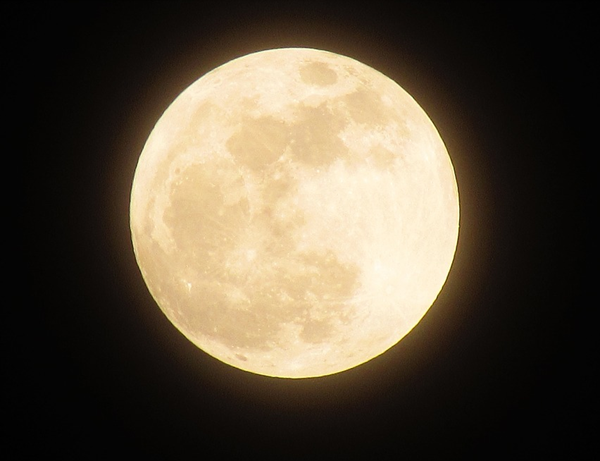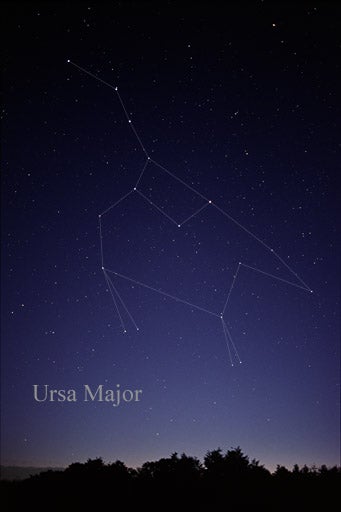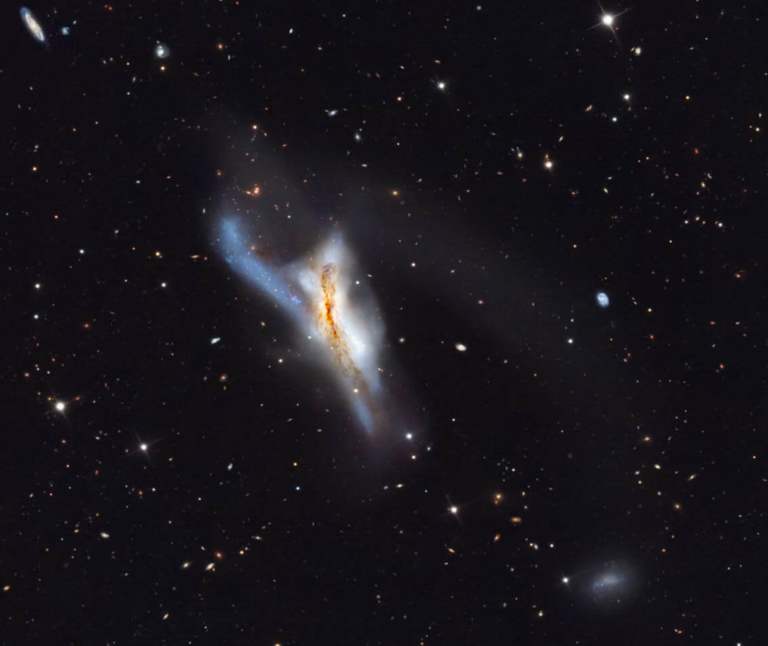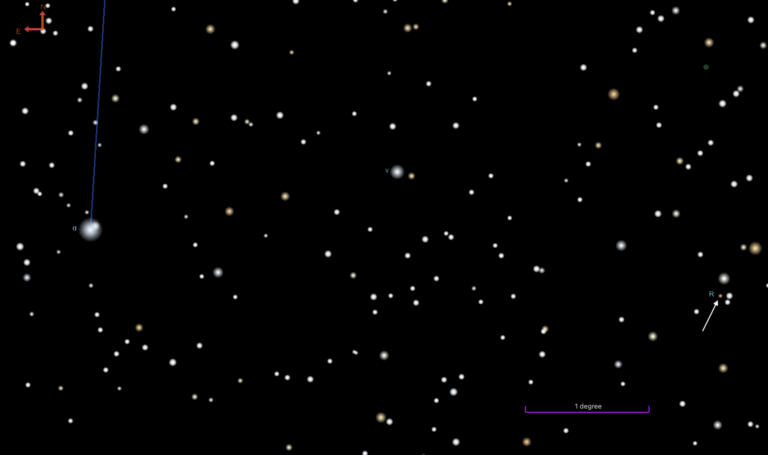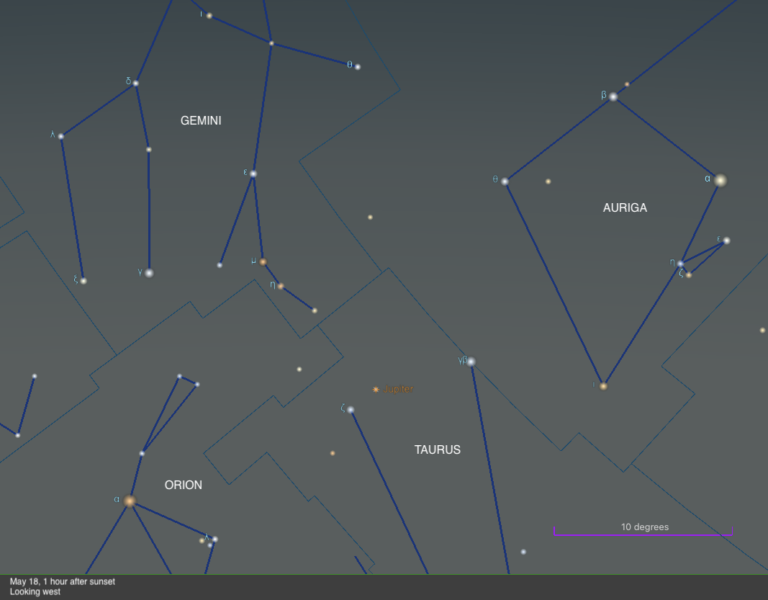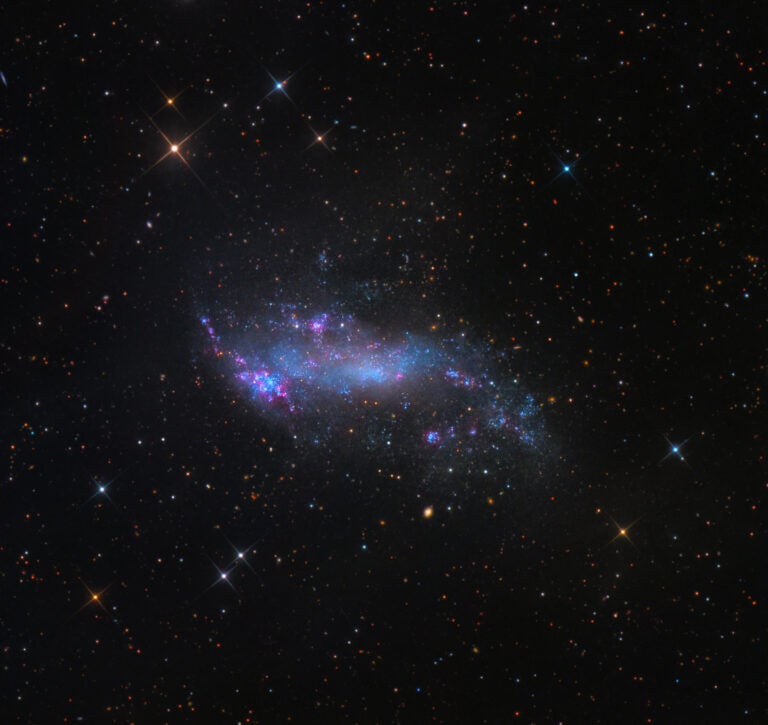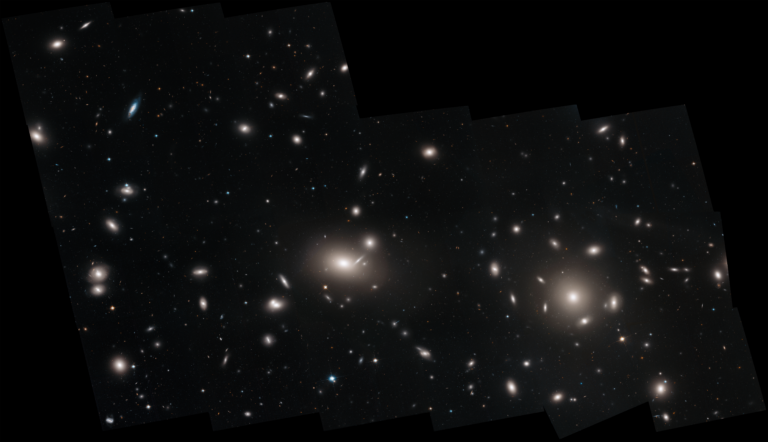Friday, September 1
Most people have never seen an object other than the Moon or rarely a comet shift relative to the background stars in real time. But the first week of September offers observers with telescopes a nice chance to see one of these rapid movers in action. Asteroid 3122 Florence — named after nursing pioneer Florence Nightingale — races past Earth this week, peaking at a rate of 9° per day. That works out to 22″, about two-thirds of Jupiter’s current diameter, every minute. The asteroid glows at 9th magnitude on September’s first three evenings and fades to 10th magnitude the following three nights. You can find it moving from eastern Delphinus tonight into northern Delphinus tomorrow, Vulpecula on the 3rd, and Cygnus on the 4th. On the 5th, it sweeps 1° west of 2nd-magnitude Gamma (g) Cygni, the central star in Cygnus the Swan.
Saturday, September 2
Brilliant Venus makes a tempting target all week, but the best views should come before dawn today, when the planet slides 1° south of the magnificent Beehive star cluster (M44) in Cancer. The two make a lovely binocular sight from the time they rise around 4 a.m. local daylight time until twilight begins to wash out the cluster’s stars an hour later. Of course, twilight has little effect on Venus because it shines so brightly, at magnitude –3.9. A telescope reveals the planet’s 12″-diameter disk, which appears a bit more than 80 percent illuminated.
Sunday, September 3
Although Mercury passed between the Sun and Earth just eight days ago, the planet named for the fleet-footed messenger god in Roman mythology lives up to its reputation this week as it climbs into view before sunrise. This morning, you can find the innermost planet 5° above the eastern horizon 30 minutes before sunup. Mercury shines at 2nd magnitude, however, so you’ll need binoculars to pull it out of the twilight glow. A telescope reveals the planet’s 9″-diameter disk and thin crescent phase. Mercury climbs higher and brightens rapidly as it heads toward greatest elongation next week, when it will appear 11° high a half-hour before sunrise and shine at magnitude –0.4.
Monday, September 4
Neptune reaches opposition and peak visibility tonight (officially at 1 a.m. EDT on the 5th). Because it lies opposite the Sun in our sky, it rises at sunset and appears highest in the south around 1 a.m. local daylight time. But you can start searching for it by 10 p.m., when it stands nearly one-third of the way from the southeastern horizon to the zenith. Neptune glows at magnitude 7.8, bright enough to spot through binoculars if you know where to look. The trick is to find the 4th-magnitude star Lambda (l) Aquarii, which lies about 10° southeast of Aquarius’ distinctive Water Jar asterism. At opposition, Neptune appears 1.2° east of this star. When viewed through a telescope, Neptune shows a blue-gray disk measuring 2.4″ across.
Tuesday, September 5
Full Moon officially arrives at 3:03 a.m. EDT tomorrow morning, but it looks completely illuminated all night. You can find it rising in the east right around sunset and then watch it climb high in the south by 1 a.m. local daylight time. It dips low in the west by the time morning twilight starts to paint the sky. The Moon lies against the backdrop of Aquarius the Water-bearer, but its bright glow nearly drowns out the faint stars in this constellation.
Jupiter has been a conspicuous evening object for the past several months, but it’s nearing the end of its reign. The giant planet lies about 10° high in the west-southwest 45 minutes after sunset. Still, at magnitude –1.7, it shines brightly enough to appear prominent against the twilight glow. If you view Jupiter through binoculars this evening, you’ll also see 1st-magnitude Spica 3° to its south (lower left). The planet appears 12 times brighter than the star. A telescope easily shows Jupiter’s four bright moons, but the planet’s low altitude means you won’t see crisp details on its 32″-diameter disk.
Wednesday, September 6
If you look overhead as darkness falls anytime this week, your eyes will fall on the brilliant star Vega in the constellation Lyra the Harp. At magnitude 0.0, Vega is the brightest member of the prominent Summer Triangle asterism. The Triangle’s second-brightest star, magnitude 0.8 Altair in Aquila the Eagle, lies some 35° southeast of Vega. The asterism’s dimmest member, magnitude 1.3 Deneb in Cygnus the Swan, stands about 25° east-northeast of Vega. Deneb trails Vega across the sky by about two hours, and passes through the zenith at approximately 10:30 p.m. local daylight time.
Thursday, September 7
After a three-month hiatus, Mars returns to view in early September. The Red Planet rises more than an hour before the Sun and climbs 7° high in the east 30 minutes before sunup. It shines at magnitude 1.8, so you’ll likely need binoculars to pick it out of the twilight glow. This reappearance marks the beginning of a long and glorious apparition for Earth’s neighbor that will culminate at opposition next July.
Friday, September 8
Although Saturn reached opposition nearly three months ago, it remains a tempting target in the evening sky. The ringed world stands some 25° high in the south-southwest as twilight fades to darkness and doesn’t dip below the horizon until midnight local daylight time. Saturn shines at magnitude 0.4 against the backdrop of southern Ophiuchus, a constellation whose brightest star glows six times fainter than the planet. When viewed through a telescope, Saturn’s globe measures 17″ across while its spectacular ring system spans 38″ and tilts 27° to our line of sight.
Saturday, September 9
The constellations Ursa Major the Great Bear and Cassiopeia the Queen lie on opposite sides of the North Celestial Pole, so they appear to pivot around the North Star (Polaris) throughout the course of the night and the year. In late August and early September, these two constellations appear equally high as darkness falls. You can find Ursa Major and its prominent asterism, the Big Dipper, about 30° above the northwestern horizon. Cassiopeia’s familiar W-shape, which currently lies on its side, appears the same height above the northeastern horizon. As the night progresses, Cassiopeia climbs above Polaris while the Big Dipper swings below.
Sunday, September 10
A week ago, Mercury was a binocular object low in the east during morning twilight. It now appears much more conspicuous — shining at magnitude –0.1 and climbing 10° high 30 minutes before sunrise. This morning, the innermost planet passes 0.6° due south of the 1st-magnitude star Regulus, while ruddy Mars stands 3° to the pair’s lower left. All three objects show up nicely in a single binocular field.


